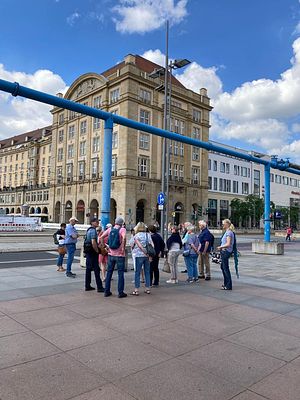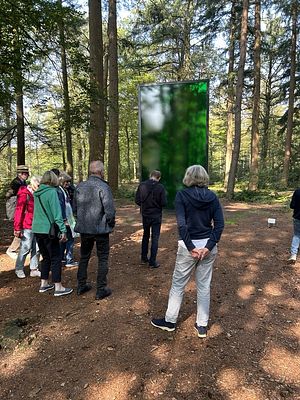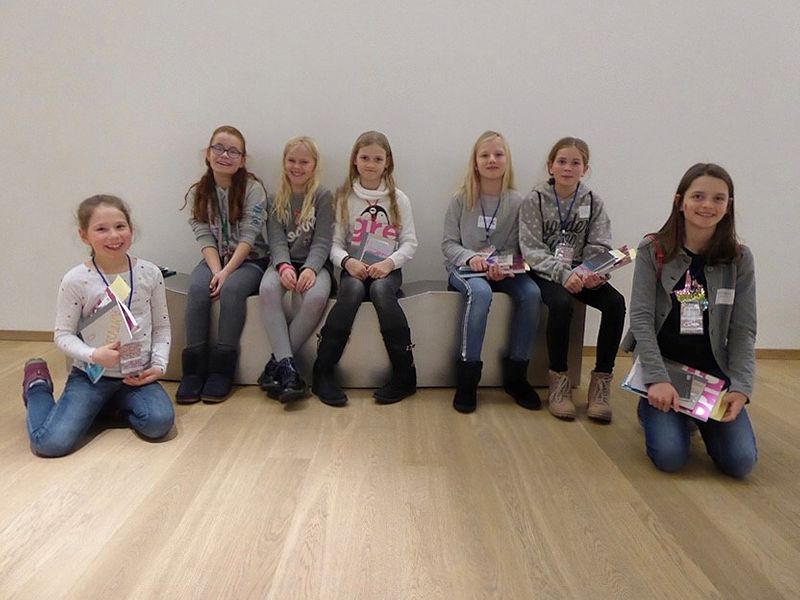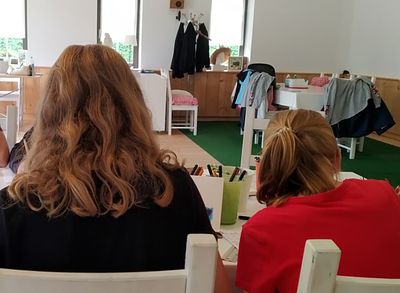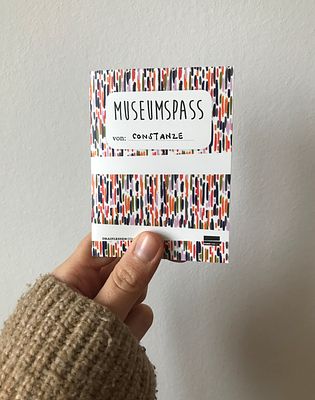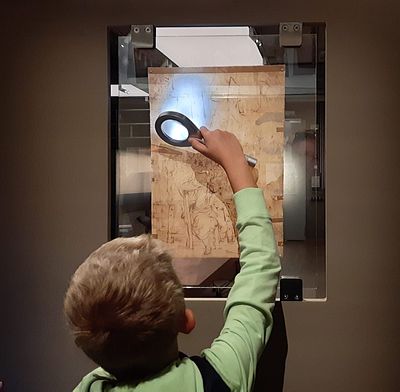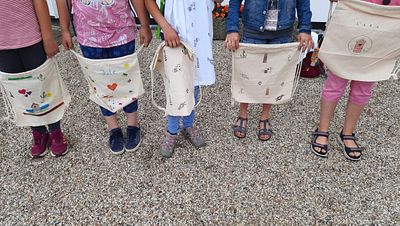Education
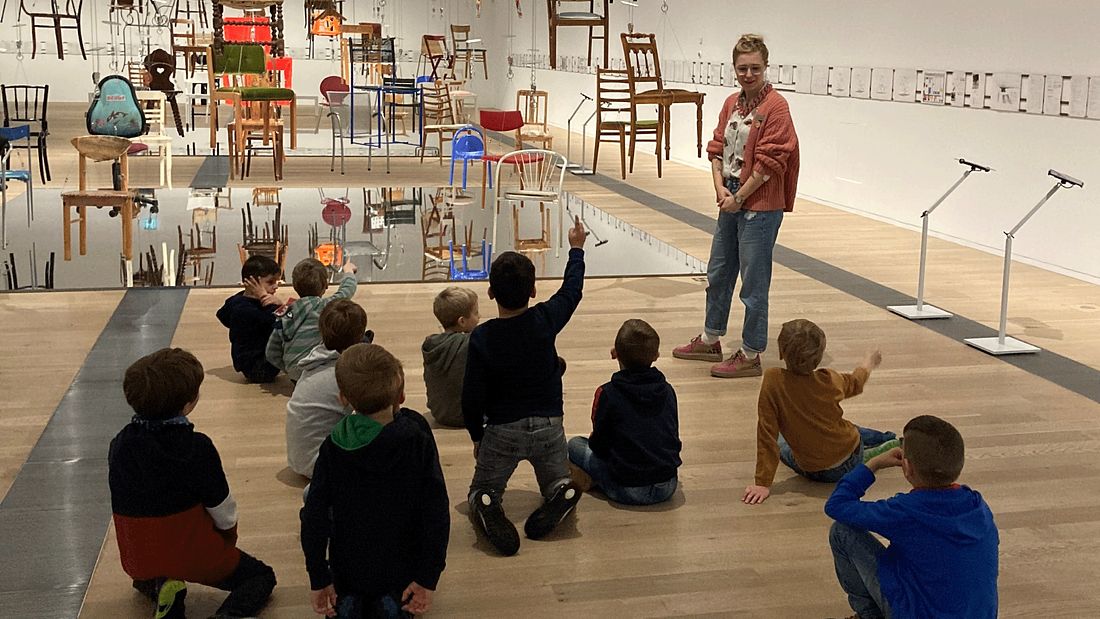
When designing the museum’s educational program, not only do we take into account the different age groups of the visitors—from children to pensioners—but we also consider their very different needs. In addition to the classic guided tours, adults are increasingly enjoying dialogue-based, accompanying tours that allow them to experience art in active conversation and discussion with others. Our aim is not only to guide and moderate, but also to provide space for dialogue among visitors.
With children and schoolchildren, a combined theoretical and practical approach has proven successful, depending on their age.
The focus, however, is always on intensive contemplation of the respective artwork of art, and the necessary time is taken for this.
Also important to us: before we can convey something, we must have understood it ourselves, because museum educators see themselves as mediators between the content of an exhibition and its visitors. Therefore, intensive and fruitful cooperation with the curators of an exhibition is indispensable for exciting and lively mediation.
With children and schoolchildren, a combined theoretical and practical approach has proven successful, depending on their age.
The focus, however, is always on intensive contemplation of the respective artwork of art, and the necessary time is taken for this.
Also important to us: before we can convey something, we must have understood it ourselves, because museum educators see themselves as mediators between the content of an exhibition and its visitors. Therefore, intensive and fruitful cooperation with the curators of an exhibition is indispensable for exciting and lively mediation.
Public Guided Tours
For each exhibition and presentation, we offer public guided tours on the weekends, which last one hour.
Alternatively, depending on the type of exhibition, expert guides are also available—not only as an orientation aid, but also as conversation partners.
Alternatively, depending on the type of exhibition, expert guides are also available—not only as an orientation aid, but also as conversation partners.
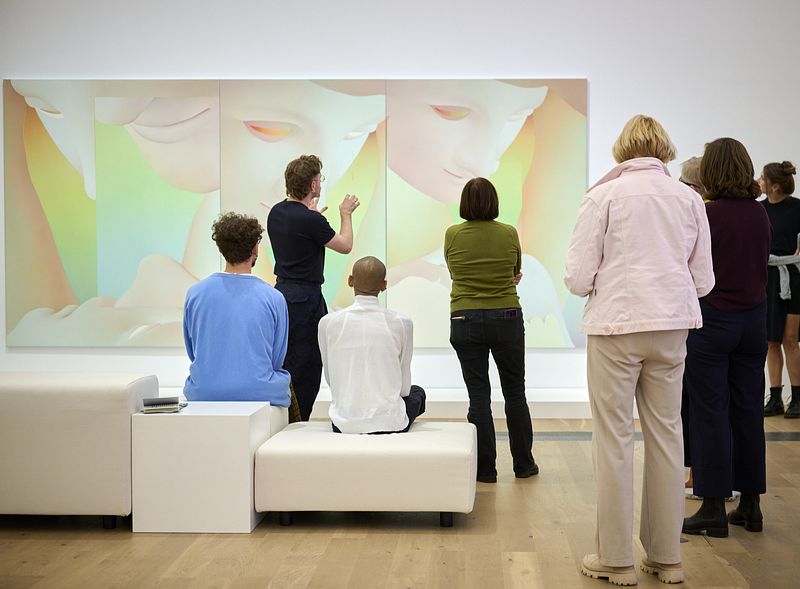
Angebote für Erwachsene und Gruppen
| © Draiflessen Collection, Foto/photo: Peter Hübbe
Discover Exhibitions via an App
For additional digital mediation on site, we use the app Actionbound in some exhibitions. During the tour, you can answer quiz questions, solve exciting tasks, and learn something about the ideas of our curators.
Taking advantage of this offer is easy: to start the current tour, all you have to do is download the free app and ask for the QR code at the museum reception the next time you visit. If needed, we will provide an iPad for the duration of the visit on which the app is already installed.
Taking advantage of this offer is easy: to start the current tour, all you have to do is download the free app and ask for the QR code at the museum reception the next time you visit. If needed, we will provide an iPad for the duration of the visit on which the app is already installed.

Actionbound
| © Actionbound
Offers for Adults and Families
Slow Art – Time for Art
The idea of slow, decelerated art viewing is not new. In recent years, museum educators and art scholars have repeatedly observed that the maximum time a museum visitor spends in front of a work of art is between 17 and 19 seconds—if the object description is read, there is often even less time left to view the work. A trend that emerged rather accidentally in New York in 2008 is addressing this issue: art is deliberately viewed for longer, so that visitors end up seeing only a few works in the exhibition, but all the more intensively. What may seem like a restriction at first turns out to be, in practice, a wonderful means of seriously examining one’s own individual experiences and attitudes.
Seeing Art Differently
Two different formats, one goal: looking at art and learning through the way you look at it. Plenty of time, fixed routines, a genuine exchange with others, small group sizes, and a protected atmosphere are the main features of both methods.
Our museum educational work is found on, among other things, the principle of Visual Thinking Strategy (VTS), which is based on the conviction that everyone, regardless of age, life experience, or cultural background, can learn and benefit from viewing art. Therefore, artworks are viewed and explored together in a group, details are noticed and discussed, and the guide encourages viewers to pursue their own reflections.
Through the principle of the “equivalence of observations” and their descriptions by the visitors, a level of deeper perception is attained. The method has been shown to improve visual perception, critical thinking, and discussion skills. VTS was developed in the 1990s by Philip Yenawine, who at the time headed the Education Department at MoMA in New York, and Abigail Housen, a cognitive psychologist at Harvard.
Another approach is Art-Based Learning (ABL): not learning about art, but learning from or with art through a mental approach. It was developed by Dr. Jeroen Lutters.
This method follows a fixed sequence based on seeing, writing, and speaking—alternately alone and in a group. The goal is that the viewer of a work of art, painting, film, book, or sculpture is always confronted with a piece from another time—past, present, future—and another reality. In the field of tension thus created, the reflection of one’s own life and of larger contexts succeeds by means of the contemplation of art.
Both formats last about an hour and a half, and the group size is limited to four people.
Workshops for Adults
In addition to the workshops designed specifically for schoolchildren, we increasingly offer courses specifically for adults. The level of craftsmanship and content is adapted accordingly. Here, too, we move within the spectrum of current exhibitions. A guided tour is just as much an integral part of the experience as is working together under supervision on small projects in the MuseumsAtelier.
Workshops for Families
We also have families in mind. The shared experience of art with different ages and perspectives is a great experience. These offers can also be booked individually by arrangement; please feel free to contact us!
Excursions
The content of our excursions is based on the current and planned exhibitions, which are always dedicated to a specific, condensed issue. The planning of the content of excursions is directly linked to this and is expanded, for example, to include cultural-historical aspects or further background information that can be discovered at special locations. In any case, we want to offer a new and different view of the exhibition.
The excursions usually start with a visit to the exhibition in the Draiflessen Collection and thus offer the participants the opportunity to gain access to the exhibited artworks—this is like a golden thread running through the trip. The group, which can already get to know each other a bit here, then goes on tour together and visits selected places, buildings, cities, or landscapes under expert guidance. An excursion thus combines direct experience of art with elements of culture and community. It helps to expand the pure exhibition experience, to view the show and its central theme from completely different perspectives, and thus to gain a new perspective on the individual works and the concept.
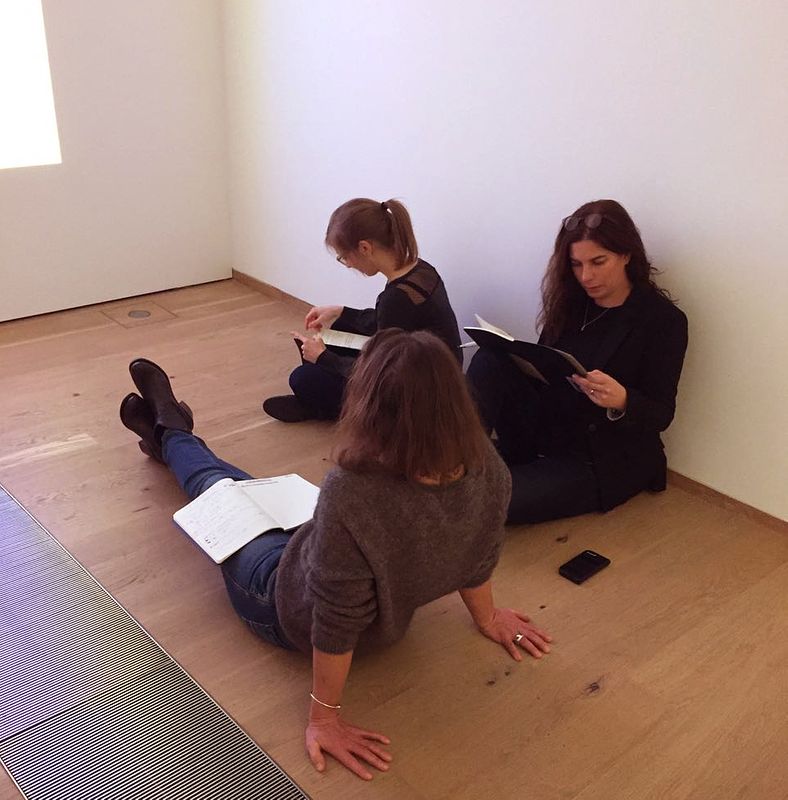
Kunst betrachten
| © Draiflessen Collection
Offers for Children and Teenagers
MuseumFun
If you would like to know a little more, or if you have already had a good museum experience through a guided tour, or if you are simply curious: we offer our MuseumFun during the school vacations. These offers last about two hours and usually take place in the morning.
For half an hour, we look at the current exhibitions together, after which the whole group goes into our museum studio and creatively and practically processes the impressions from the exhibition tour. In most cases, lively discussions about the topic presented in the exhibition develop, especially because the group size is deliberately limited to five children.
The MuseumFun events are aimed at schoolchildren between the ages of 8 and 16. Thematically, we are closely oriented to the exhibition currently on display. We focus on technical, content-related, philosophical, and artistic aspects and walk through the exhibition together once in each workshop, in order to then creatively process the insights gained, questions that arise, or simply the experience in the MuseumAtelier. The focus here is on having fun visiting museums, enjoying art, and exchanging ideas with others.
MuseumExperts
How would it be to inspire other museum visitors about the art on display in an exhibition, to inform them about important and interesting things? In this two-day workshop you will learn how to do so. You will look behind the scenes of the museum, get to know the exhibits, and, together with the professionals, prepare your own short guided tour, which you can try out on “real” visitors on the Sunday in the second part of the workshop.
MuseumPass
Every child who wants to visit our exhibitions and workshops regularly will receive a MuseumPass: for each visit, you get a stamp in your passport. When you have received 15 stamps, a great surprise awaits you!
Video Clips for Home
As an additional offer, we have put some great video tutorials (German) online for you to watch at home. You can find them all here.
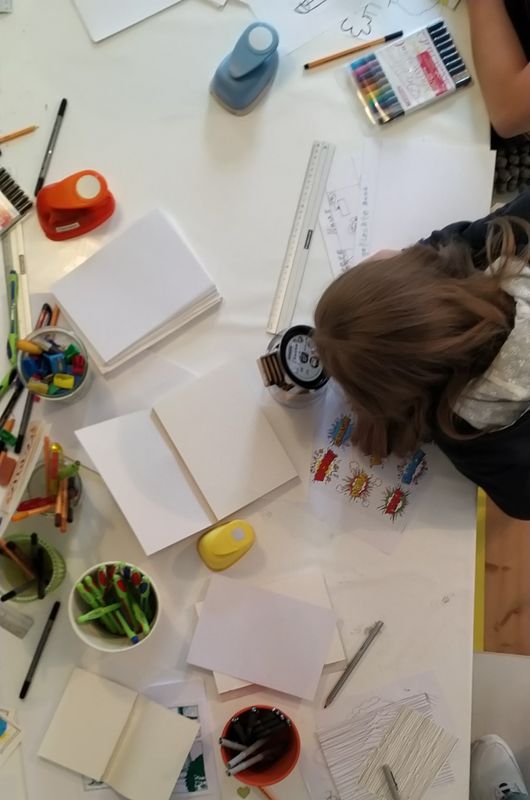
MuseumsSpaß
| © Draiflessen Collection
Offers for Schools
In the course of their school life, pupils occasionally—more or less voluntarily—visit museums, view exhibitions, and are guided as a class. Like many other museums, we offer special guided tours for the most diverse needs of school classes. In this way, we can respond to children and their methods of appropriation, in the best case promote their interests, and also answer individual questions during the guided tours and the follow-up rounds in the museum education area of the Draiflessen Collection.
Shortly after the start of each exhibition, we invite teachers to an information session, where museum education and visitor management staff are also open to questions and suggestions. Recipients of our newsletter (you can subscribe below) will automatically be informed in time.
Shortly after the start of each exhibition, we invite teachers to an information session, where museum education and visitor management staff are also open to questions and suggestions. Recipients of our newsletter (you can subscribe below) will automatically be informed in time.
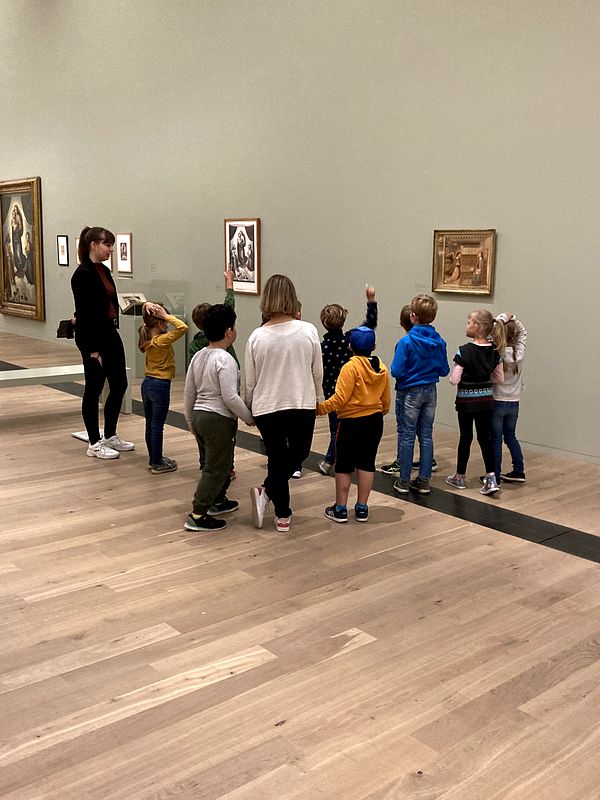
Schulführung
| © Draiflessen Collection
Fun at the museum digital
With our great virtual Fun at the Museum, you have the opportunity to create something beautiful using simple materials. Whether it's Christmas decorations made from socks, a bowl made from an old T-shirt or a dream catcher. Our videos, which were created in cooperation with students from the Department of Textile Design at the University of Osnabrück, show you what you need and give you precise craft instructions. Have fun with it!
Contact Us!
Many of our offers can also be booked individually. We will be happy to advise you on which format suits your needs. We also welcome your comments and requests, so feel free to call us. You can reach us during opening hours at +49 (0)5452.9168-3500 or by email:
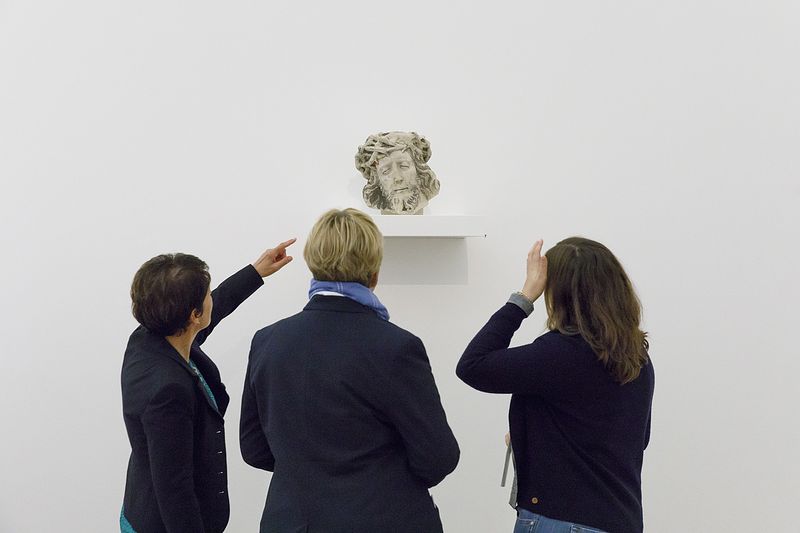
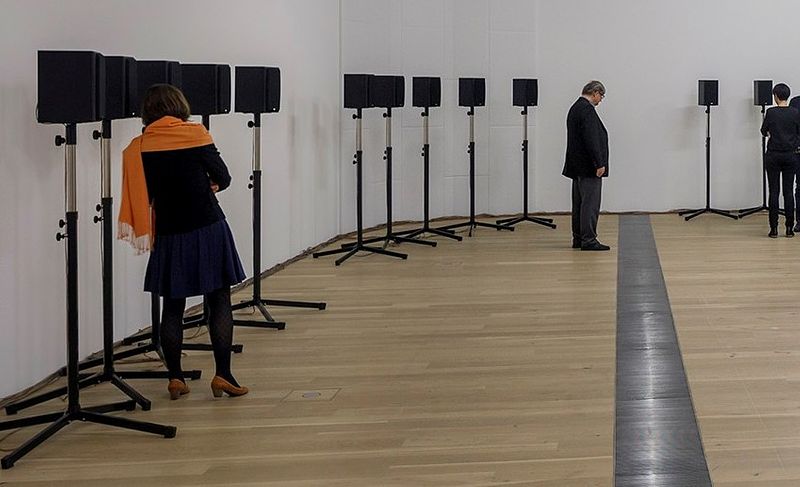
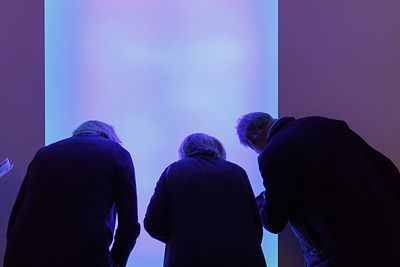
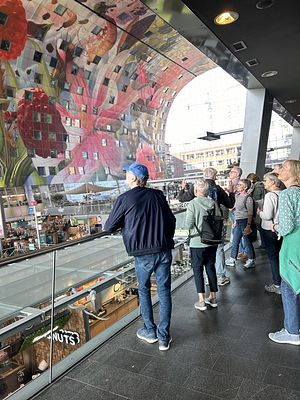
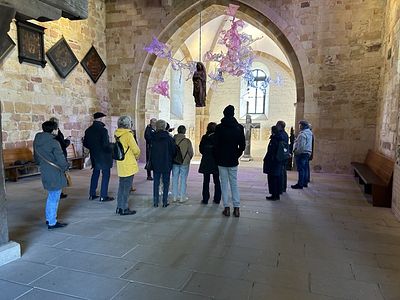
.jpg?locale=en)
